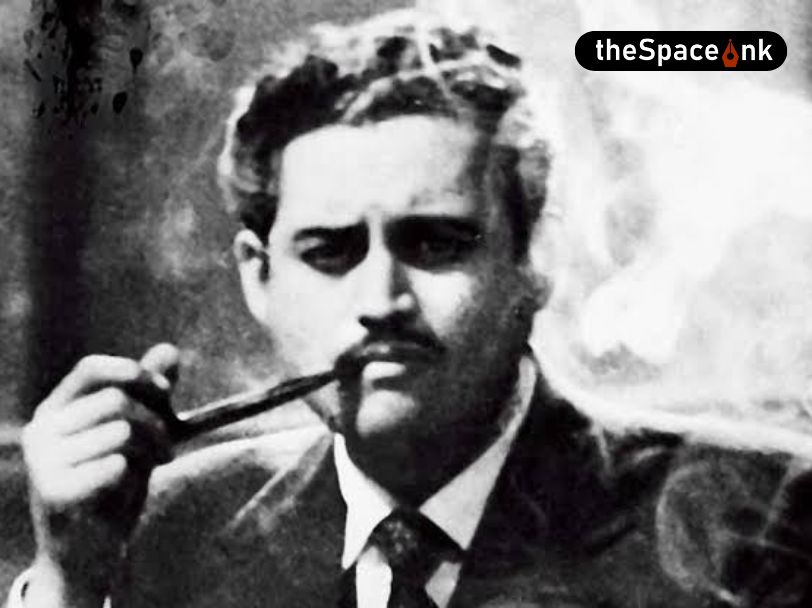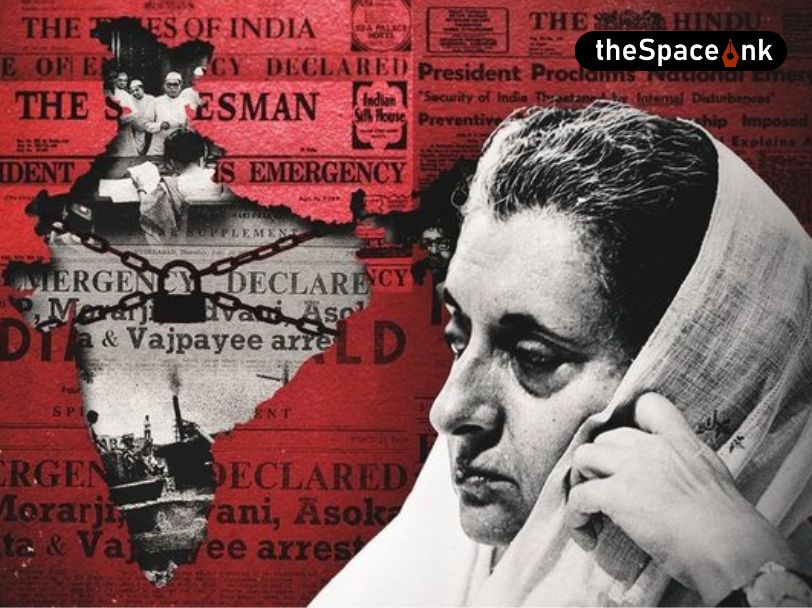It may come as a surprise to many people, but it’s true: Bengali had a chance to become India’s top language but the idea was nipped in the bud after it had faced stiff resistance from Bengalis themselves, the rich and powerful ones, who favored Persian. The Bengali-Persian quarrel may now be dead, but the politics of language is very much alive and well in India even today, nearly 200 years after the earlier episode played out.
The fight has a history going back to the 1800s when the British started thinking they were going to rule India for a long time. To prepare for it, they embarked upon patching together an administration that could keep Indians under tight control and, at the same time, extract hefty tax revenues from the rulers.
This was a time when Bengal —then India’s most prosperous part —was in the grip of the British East India Company, whose main aim was to make tons of money for its owners. This massive corporation, founded under Queen Elizabeth I, was the world’s largest entity of its kind then engaged in foreign trade. Incorporated on 31 December 1600, the company acted as a part trade organization, part nation state and earned huge profits from trade with India, China, Persia and Indonesia for more than 200 years.
One of the difficulties the company faced in Bengal involved settling disputes related to land ownership and contracts as well as tax collections. After taking control of the region in the mid-1700s, the British retained the Mughal official language, Persian, as their official language. But in due course they learned to their great annoyance that people kept their land and tax records in their local dialects. And, they used to submit the vernacular documents to courts whenever they ran into ownership or contract disputes.
Judges Faced Nightmare
This created a nightmare for the judges. They needed to hire lots of translators to decipher the local records and interpret statements of warring parties. It cost the company a bundle, and its directors were not too happy about it. So the company set out to streamline the languages used in courts and tax collections. While profit-making was certainly the main driver behind the company’s efforts to remove the language anomalies, its top dogs had other concerns, too. Some liberal trustees wanted justice to be dispensed in a language familiar to the judge as well as to the people at large. Others thought that the language of the people should be the language of the courts. To make it happen, however, was not really a piece of cake. The colonial bosses had different views as to which vernacular or script should be used. Some favored retaining Farsi, others supported Hindustani in Persian [Urdu], and still others Hindustani in Nagari [Hindi]. But they, in general, agreed that the convenience of the people should take precedence over the convenience of the rulers.
In the 1830s, when the company finally began replacing Farsi with different dialects, clashes broke out all over India. Some localities feared that many of their people, who did court-related work, would become jobless, if they were to switch to a new script; others took it as an attack on their religion. In Bombay and Madras presidencies, English and local languages had replaced Persian by 1832. In Bengal, a law passed in 1837 lifted the mandate that Persian must be used in court cases or tax disputes. The law also gave the governor the power to come up with ideas to create a new language to replace Farsi.
In 1838, the governor decided to use vernaculars in Bengal, Bihar and Orissa. The governor’s staff outlined several options for languages and scripts: Persian in Persian scripts; Hindustani in Persian scripts, i.e. Urdu; English in Roman script; Hindi in Nagari and Bengali in Bengali script.
Bengalis Favored Persian
To the surprise of many people, nearly 500 Dhaka residents petitioned the government in 1839 in favor of Persian over their native Bengali. Today’s Bengalis take enormous pride in the glory of their mother tongue, but their brethren generations ago were of different mold. Call them materialists or thoughtless whatever you like, they loved money more than language. Here the common Bengali interest superseded the religious divide. When it comes to money everyone speaks the same language!
They argued that the Bengali script varied from place to place; one line of Persian could do the work of ten lines of Bengali; the awkward written style [then derisively dubbed the crab style] of Bengali read more slowly than that of Persian; and people from one district could barely understand the dialect of another district.
The petition surprised many people not just because the Bengalis went against their mother tongue but also because both Muslims and Hindus jointly favored Farsi. Of the signers, 200 were Hindu and the rest Muslim. Both the Hindus and the Muslims, especially landowners and those who had to deal with the courts, understood Persian and Arabic for business dealings far better than Shanscrit, [as spelled by Nathaniel Halhed, the Englishman who wrote the first Bengali grammar book in English] which contributed heavily to Bengali.

The Sadar Court of Bengal bought the argument that too many dialects made Bengali unfit to be a court language; the court would need as many translators as there were dialects. The court also noted that to record judicial proceedings in Bengali or Hindi would require far longer than in Persian because Bengali and Hindi scripts took more time to write.
The High Court Opposed Bengali
So it permitted plaintiffs and defendants in all civil and criminal cases to submit papers in any language they wished in districts where either Urdu or Bengali was in use. In essence, the court killed an earlier decision to replace Farsi by the vernaculars, and allowed instead the local dialects to be added to Persian to conduct official business.
But the fight over picking a language continued, with different parties giving different arguments in support of their respective position. As a result, in 1840 the government barred district courts from using Nagari without prior approval from higher-ups. In the end, the Government of India, in consultation with provincial administrators, totally opposed Nagari, because a vast majority of the judges favored Urdu.
While the Bengali resistance to Bengali was pure economics, in other parts of India the story was entirely different. In the North, for example, the conflict was more religious than material. Religion intruded into language soon after Islam entered India. Muslim conquerors had a hard time to talk with their new subjects in the hard-to-learn Shanscrit and often used their native idioms to clearly express themselves.
nearly 500 Dhaka residents petitioned the government in 1839 in favor of Persian over their native Bengali. Today's Bengalis take enormous pride in the glory of their mother tongue, but their brethren generations ago were of different mold. Call them materialists or thoughtless whatever you like, they loved money more than language. Here the common Bengali interest superseded the religious divide.
When this mixed dialect first appeared in Naagoree [now spelled as Nagari or Nagri] script, the Brahmin showed disdain. To the Vedic pundits, the Naagoree, which means writing, was too coarse. So they had their sacred books published in “polished” Naagoree, or Daeb Naagoree, [now Debanagari] or the writing of the Gods. Hindu bankers, who were very active in the Ganges Delta and drew large traffic, circulated these books into the Bengal interior. However, Farsi remained India’s official language until the British changed it much later.
In 1757, the British became Bengal’s ruler defeating the Muslim. Under the British, the upper-class Hindu established themselves in a strong position in due course and turned Bengali into a “high-flying” medium of expression in the Shanscrit mold.
Kolkata Reshaped the Bengali Language
Syamacharan Ganguli, a Calcutta University fellow, protested the Shanscritization of Bengali. He instead pushed for assimilation of the vocabulary of written Bengali to be the everyday speech of educated Bengalis. Several other Bengali literary giants, including Rabindranath Tagore, Haraprashad Shastri and Ramendrasundar Tribedi, went along with Ganguli.
The high-flying language, however, was no good for common folks, because it was loaded with Shanscrit words. Neither was Ganguli’s Bengali of the educated, because illiterate farmers, weavers and fishermen all spoke local dialects. [An estimated 50 percent of Bengali words are distorted Shanscrit, 45 percent are pure Shanscrit, and the rest are foreign].
As a result, Bengali has been “stunted in its growth by the cramming of a class of food” that it could not digest. This caused a permanent fissure with the Muslim, who viewed Shanscrit as a Hindu slang. The fallout was immense. In the rest of India, the melee centered on Hindi and Urdu. The Hindu favored Hindi and the Muslim wanted Urdu. When the British ordered the exclusive use of the Nagari script in school in 1880 to meet a Hindu demand in the state of Bihar, which was then under the Bengal Presidency, the Muslims were outraged.
As the quarrel went on between the Hindus and the Muslims, the colonial rulers made drastic changes to the way they exchanged information with Indians. In the 1830s, English replaced Persian on the higher governmental level and the vernaculars became the medium of transactions on the lower. In much of north India, Urdu became the official vernacular. Hindi failed to reach that stature until the late 1800s. Hindi began replacing Urdu in the 1870s in Central Provinces and in the 1880s in Bihar, and by 1900s in the North-Western Provinces.
Gandhi Supported Hindi
The fight for Hindi supremacy still continued. M. K. Gandhi created the Hindi Prachar Shabha in 1918 to spread Hindi literacy among the non-Hindi speaking people of South India as part of an attempt to unify India. After this outfit intensified efforts to propagate Shanscritized Hindi, the Muslim League demanded that Urdu be made India’s lingua franca. Meanwhile, the Indian National Congress at its Karachi session in 1925 proposed to make Hindustani the lingua franca. A few years later, the Hindi Sahitya Sammelan modified Congress’ resolution and proposed that Hindi-Hindustani be made India’s lingua franca.
Gandhi then invited several linguists to the Hindi Sahitya Sammelan at Nagpur to consider the question. The scholars voted in favor of Hindi-Hindustani. This decision riled up nationalist Muslims, but their concerns were ignored. The Sahitya Sammelan’s decision to favor Hindi-Hindustani was upheld at the group’s Indore session, further fueling the communal passion.
In May 1942, Gandhi founded a new society, called the Hindustani Prachar Sabha; it supported Congress’ decision to favor Hindustani, and thus created three claimants to the status—Hindi, Hindustani, and Urdu. The Hindi-Urdu duel in the end exploded into Hindu-Muslim war. In free India, Hindi gained the national stature as a symbol of Hindu pride and spread nationwide like wildfire, partly thanks to Bombay movies.
Bengali, meanwhile, plunged into dark abyss, because Bengal’s partition dwarfed the region both demographically and economically, denying its language the edge it needed to be a power play. Bengali as a regional small fry never made the cut to the national level.
- In this article Sanskrit is spelled Shanscrit, as per Nathaniel Halhed, the Englishman who wrote the first Bengali grammar book in English.
- A slightly altered version of this article appeared earlier in The Wire magazine.
B. Z. Khasru, a U.S.-based journalist, is author of “Bangladesh Liberation War, How India, U.S., China and the USSR Shaped the Outcome” and “The Bangladesh Military Coup and the CIA Link.” His new book, “One Eleven Minus Two, Prime Minister Sheikh Hasina's War on Yunus and America,” will be published shortly by Rupa & Co., New Delhi.







